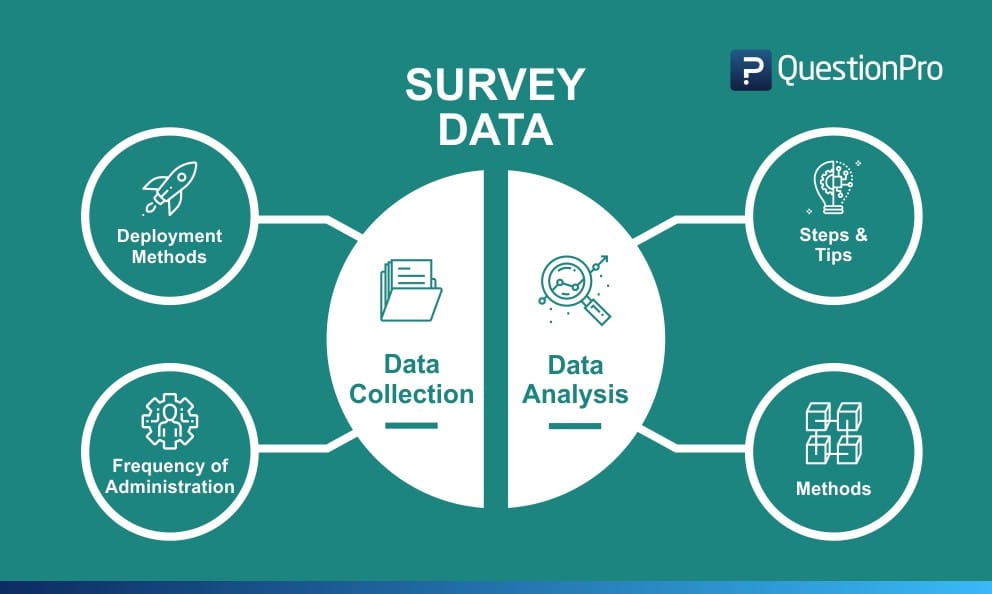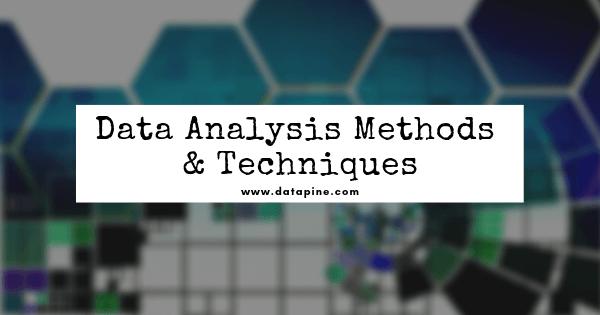
#Data analysis methods series
Flow time series data means measuring the activity of the attributes over a certain period, which is generally part of the total whole and makes up a portion of the results.Stock time series data means measuring attributes at a certain point in time, like a static snapshot of the information as it was.Segmentation: Splits the data into segments to show the underlying properties of the source information.įurther, time series data can be classified into two main categories:.Intervention analysis: Studies how an event can change the data.It uses the historical data as a model for future data, predicting scenarios that could happen along future plot points. Exploratory analysis: Highlights the main characteristics of the time series data, usually in a visual format.Explanative analysis: Attempts to understand the data and the relationships within it, as well as cause and effect.Descriptive analysis: Identifies patterns in time series data, like trends, cycles, or seasonal variation.Curve fitting: Plots the data along a curve to study the relationships of variables within the data.Classification: Identifies and assigns categories to the data.

Lack of fit or overfitting models lead to those models not distinguishing between random error and true relationships, leaving analysis skewed and forecasts incorrect. Models that are too complex or that try to do too many things can lead to a lack of fit. However, analysts can’t account for all variances, and they can’t generalize a specific model to every sample. Examples of time series analysis in action include:īecause time series analysis includes many categories or variations of data, analysts sometimes must make complex models. Likewise, time series analysis is ideal for forecasting weather changes, helping meteorologists predict everything from tomorrow’s weather report to future years of climate change. Stock market analysis is an excellent example of time series analysis in action, especially with automated trading algorithms. Industries like finance, retail, and economics frequently use time series analysis because currency and sales are always changing. Time series analysis is used for non-stationary data-things that are constantly fluctuating over time or are affected by time. Read other examples of the application of time series analysis here. Today’s technology allows us to collect massive amounts of data every day and it’s easier than ever to gather enough consistent data for comprehensive analysis. It can show likely changes in the data, like seasonality or cyclic behavior, which provides a better understanding of data variables and helps forecast better.įor example, Des Moines Public Schools analyzed five years of student achievement data to identify at-risk students and track progress over time. Time series forecasting is part of predictive analytics. When organizations analyze data over consistent intervals, they can also use time series forecasting to predict the likelihood of future events. With modern analytics platforms, these visualizations can go far beyond line graphs. Using data visualizations, business users can see seasonal trends and dig deeper into why these trends occur. Time series analysis helps organizations understand the underlying causes of trends or systemic patterns over time. Why organizations use time series data analysis Additionally, time series data can be used for forecasting-predicting future data based on historical data. It also ensures that any trends or patterns discovered are not outliers and can account for seasonal variance. An extensive data set ensures you have a representative sample size and that analysis can cut through noisy data. Time series analysis typically requires a large number of data points to ensure consistency and reliability. It provides an additional source of information and a set order of dependencies between the data.


In other words, time is a crucial variable because it shows how the data adjusts over the course of the data points as well as the final results. What sets time series data apart from other data is that the analysis can show how variables change over time. However, this type of analysis is not merely the act of collecting data over time. In time series analysis, analysts record data points at consistent intervals over a set period of time rather than just recording the data points intermittently or randomly. Time series analysis is a specific way of analyzing a sequence of data points collected over an interval of time. Times series analysis helps us study our world and learn how we progress within it. In time series analysis, time is a significant variable of the data.


 0 kommentar(er)
0 kommentar(er)
